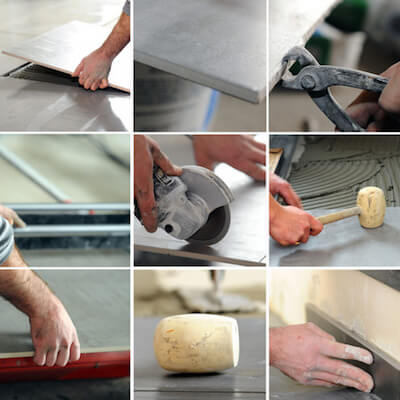What’s Causing My Squeaky Floors?
It’s one of the most common questions we receive. And it’s a problem almost every homeowner faces at some point.
And while every squeak that exists in your home can be fixed, you must first determine the cause.
Cause #1: Wintertime weakening
When did the squeaking first occur? As temperatures get colder, the heat kicks on in your home. And as the warm air filters through your home, the air becomes drier.
Wood is susceptible to the changing moisture levels inside your home. As it gains moisture from air conditioners in the summer and loses moisture from the heat in the winter, the wood changes and moves.
In the winter, the wood contracts. The planks rub against each other or against the nails that hold the planks in place. If the squeaking is caused by flooring gaps, its more than likely the wood’s reaction to winter weather. Although winter squeaks may be annoying, there’s no cause for alarm.
The easiest way to combat the problem is by introducing moisture into your home. A humidifier will not only keep your flooring happy, but it can make your environment more comfortable to live and breathe in too.
Cause #2: Flooring joists
If your flooring squeaks year round, no matter what the temperature is outside, it might be a problem with your flooring joists. Joists are part of the base of your floors. They provide the support for your flooring above. In order to determine if the source is your joists, go to the floor beneath (if you have access) and look at the subfloor. If you see that the joists appear to be loose, you can buy a repair kit to drill down through the floor and tightly secure the joists back into place. Repeat until the squeak subsides.
You can also attach a special brace to the subfloor to tighten the joist into place.
Cause #3: Uneven subfloor
If a subfloor is built or moves and becomes uneven, it can cause gaps between the flooring and subfloor. When you put weight on the floor, it causes the subfloor to rub against the flooring joists, causing the floor to squeak.
Again, return to the basement or floor beneath the air of concern. Have someone walk over the area with the squeak. If the subfloor moves, it may be a gap problem. A loose subfloor can be fixed by drilling up from below into the subfloor, drawing the subfloor and the flooring closer together. Be careful not to go too far, or you’ll come through the flooring into your living space.
Have additional questions about your flooring? We’re here to help.
